The Apple iPad Air 2 Review
by Joshua Ho on November 7, 2014 9:30 AM EST- Posted in
- Tablets
- Apple
- Mobile
- iOS
- ipad Air 2
GPU Performance
On the GPU side of things the iPad Air 2 seems to have a GX6650, which should provide a healthy boost to GPU performance when compared to the GX6450 in the A8. Apple has placed a strong emphasis on gaming for their iPad line, so there are some obvious comparisons to be made between NVIDIA's Tegra K1 and the A8X as well. To test this, we use a suite of benchmarks that can give a good idea of real world gaming performance.
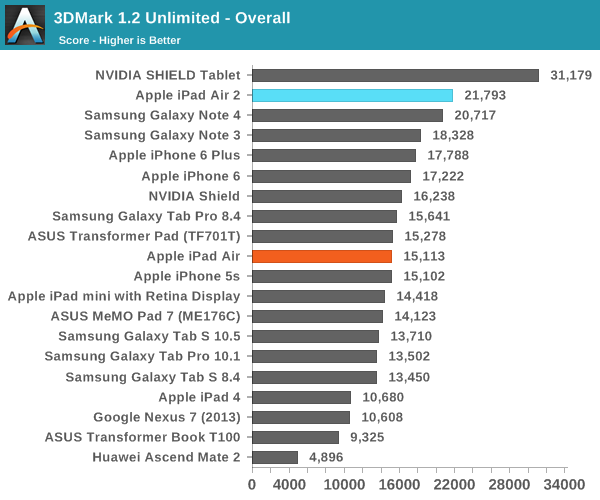
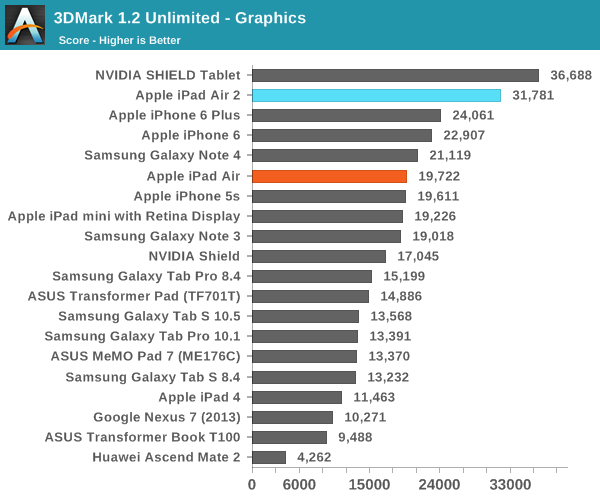
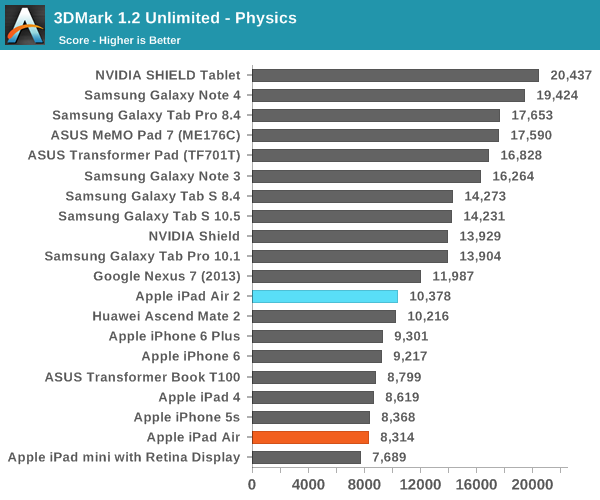
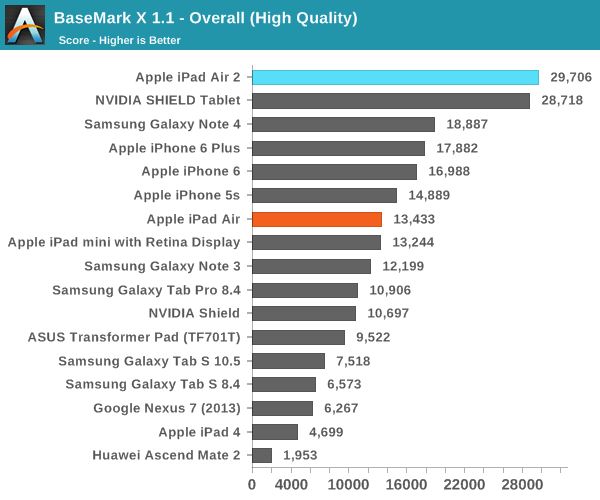
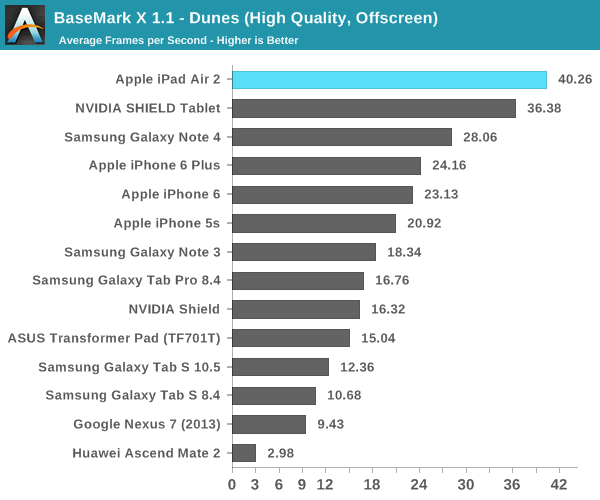
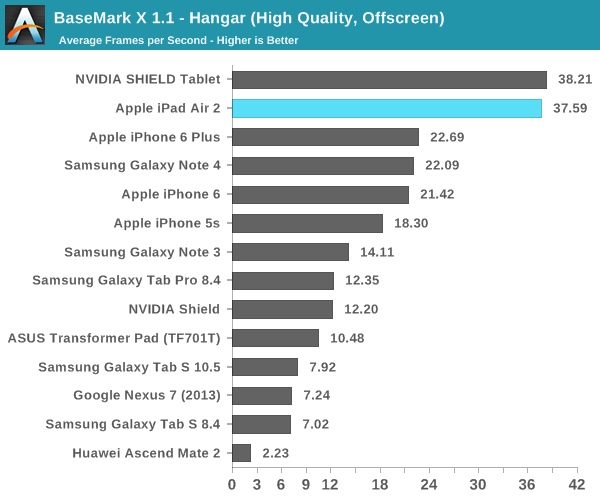
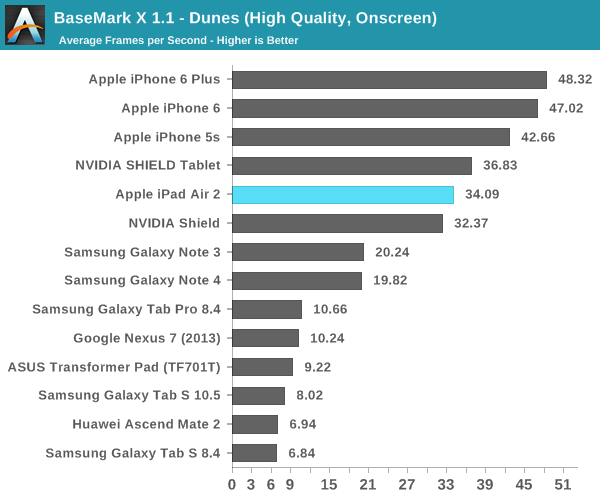

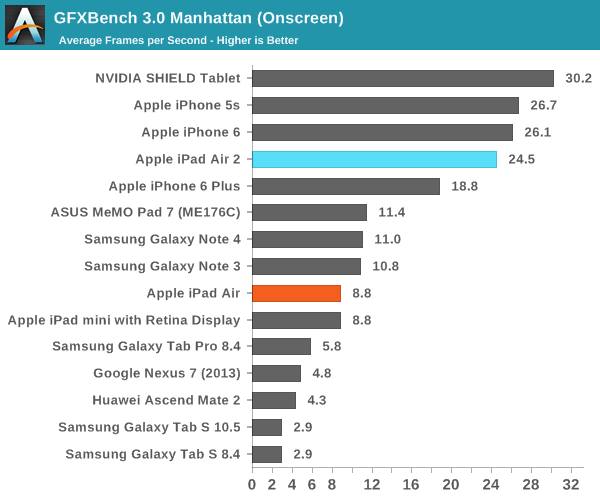

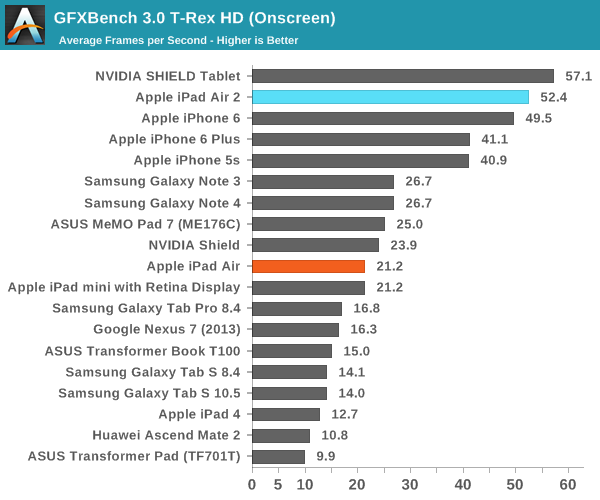

In practice, while we see that the A8X's GPU is extremely close to Nvidia's single Kepler SMX across the board, with the sole exception of 3DMark which seems to be due to the dependencies present in the physics test that dramatically lower the overall score. NVIDIA's Tegra K1 seemed incredible for its GPU performance earlier this year, so it's just as surprising to see Apple successfully rival NVIDIA in this area. Of course, GPU performance is a function of both peak performance and sustained performance, so we'll have to look at the GFXBench battery rundown test to get the full picture here. If Apple can deliver far superior performance and battery life in such a situation, it's pretty clear that the jump to 20nm will be critical to pushing the limits on what's possible in a mobile device.
NAND Performance
As we've seen before on some tablets, poor storage performance can cause major issues with the overall experience as I/O pauses can far exceed just a few frame drops that one might expect from cases of UI lag induced by insufficient performance elsewhere. In order to attempt to quantify this performance we use a custom utility developed by Eric Patno. While such testing is far from a complete look at performance, this can give a rough idea of what to expect.
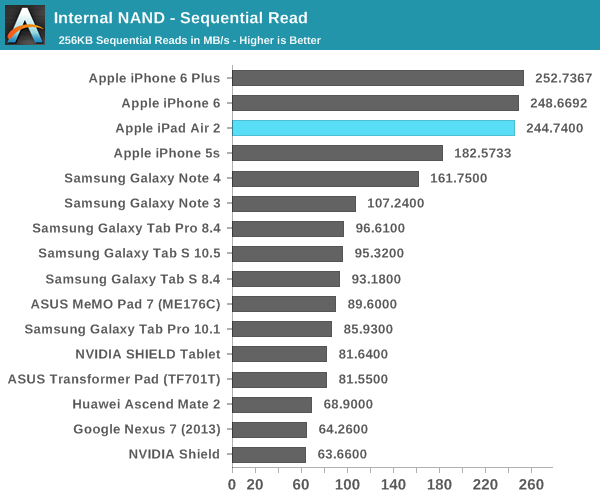
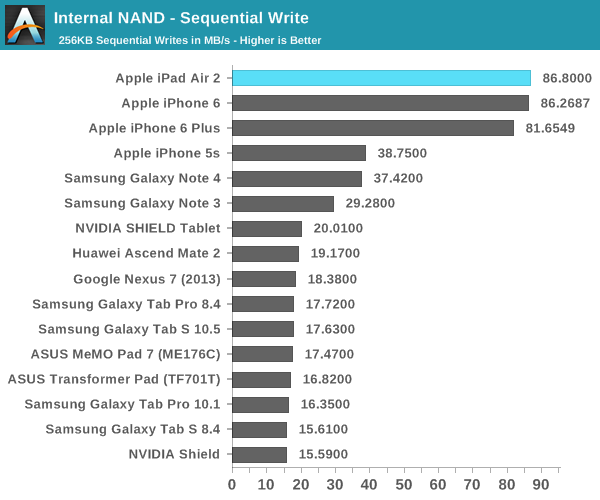
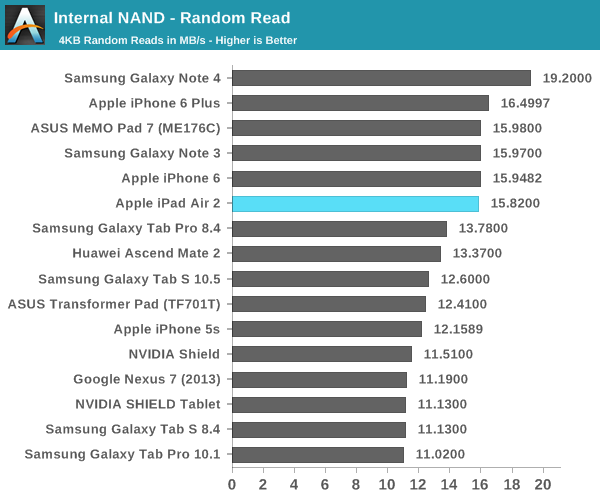

Overall, it seems that Apple does quite well on the storage tests. It seems that the iPad Air 2 shares its storage solution with the iPhone 6. While I don't have an iPad Air on hand for testing, it should match quite closely to the iPhone 5s. This represents a generally high-quality NAND solution, but as mentioned before random I/O could stand to improve a bit. Compared to most of the lower-cost Android tablets it's definitely as good as it gets though.










226 Comments
View All Comments
tipoo - Friday, November 7, 2014 - link
Question, don't you have to divide the final FPS of the performance degradation test with the first run, to see how much it actually went down? Otherwise you're not looking at degradation so much as total performance still. Performance may have degraded, but if it's higher to start with it's probably still higher in the end relatively.tipoo - Friday, November 7, 2014 - link
ie, if one device starts with 100FPS and degrades 40%, and the other starts at 50 and degrades 10%, the degradation on the second one is lower but the first one will still show higher on that graph.JoshHo - Friday, November 7, 2014 - link
This is definitely true, and it's taken into account when writing the review. In this case the degradation wasn't large enough to change any conclusions on the matter.kenansadhu - Friday, November 7, 2014 - link
That NVIDIA Shield tablet is looking more and more interesting for me. I hope it will get a discount this holiday seasonphoenix_rizzen - Friday, November 7, 2014 - link
Yeah, it certainly is. This looks like the proper upgrade for a 2012 Nexus 7 running Tegra3.lucam - Friday, November 7, 2014 - link
What's up to Tegra 4..:)chizow - Friday, November 7, 2014 - link
Any plans to update these graphs with Nexus 9 results? Sorry if this is mentioned in the piece somewhere, I tend to skip around before sitting down to read them in their entirety, thanks!tipoo - Friday, November 7, 2014 - link
They waited for the newer firmware on the Nexus 9 before finalizing results I believe.coldpower27 - Friday, November 7, 2014 - link
"The fact that Apple used A7 in the previous iPad Air means that on top of already being a serious step up in transistor count versus A8, compared to the iPad Air 1 the gap is even larger. A7 occupied 102mm2 and more than 1 billion transistors, so compared to Apple’s previous tablet Apple has come very close to doubling their transistor count within 1 generation. "Did you mean triple? As 3 Billion is well over doubling of 1 Billion.
Ryan Smith - Friday, November 7, 2014 - link
Doubling is correct. A7 is over 1B. I suspect it's close to 1.5B.